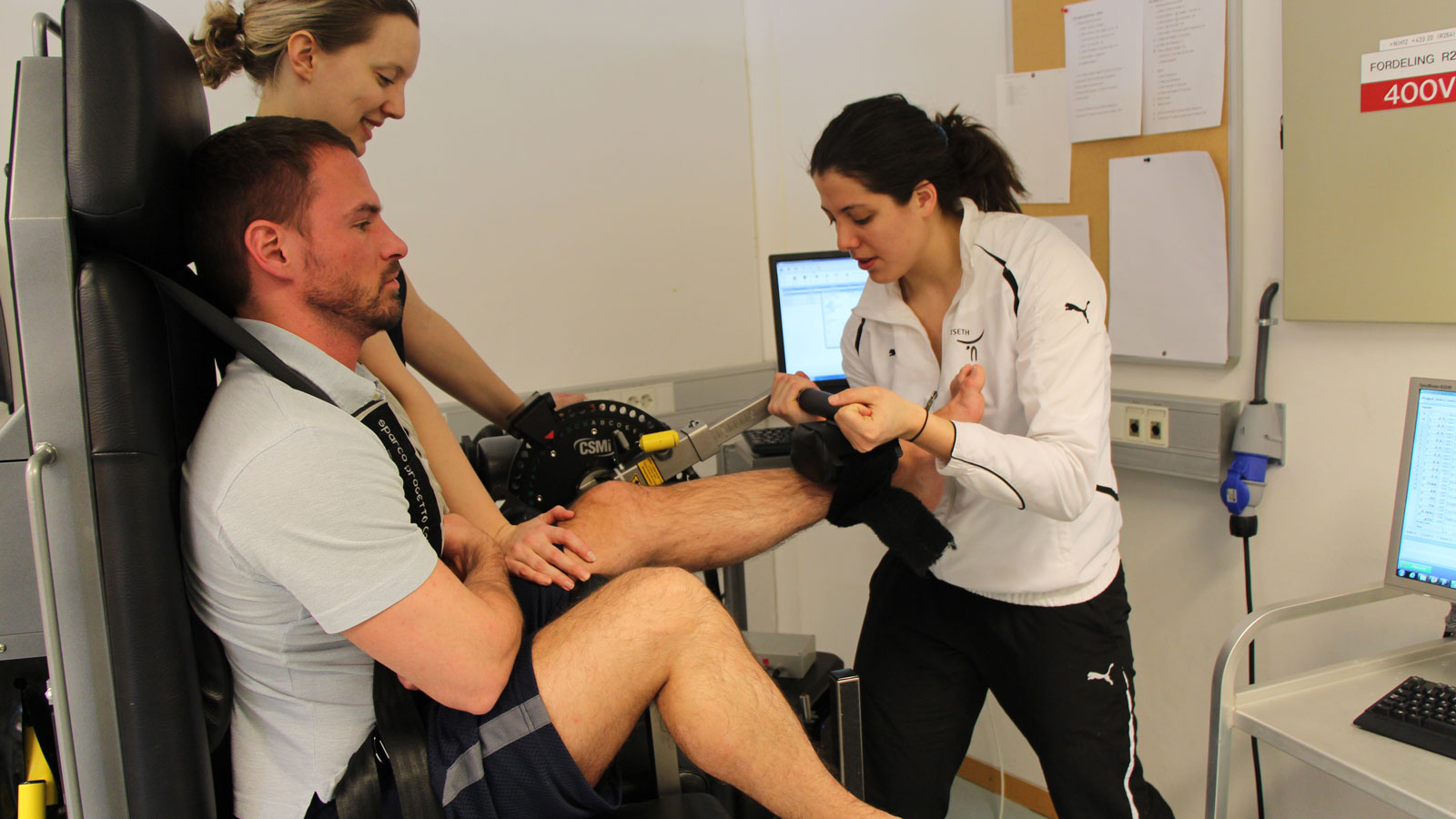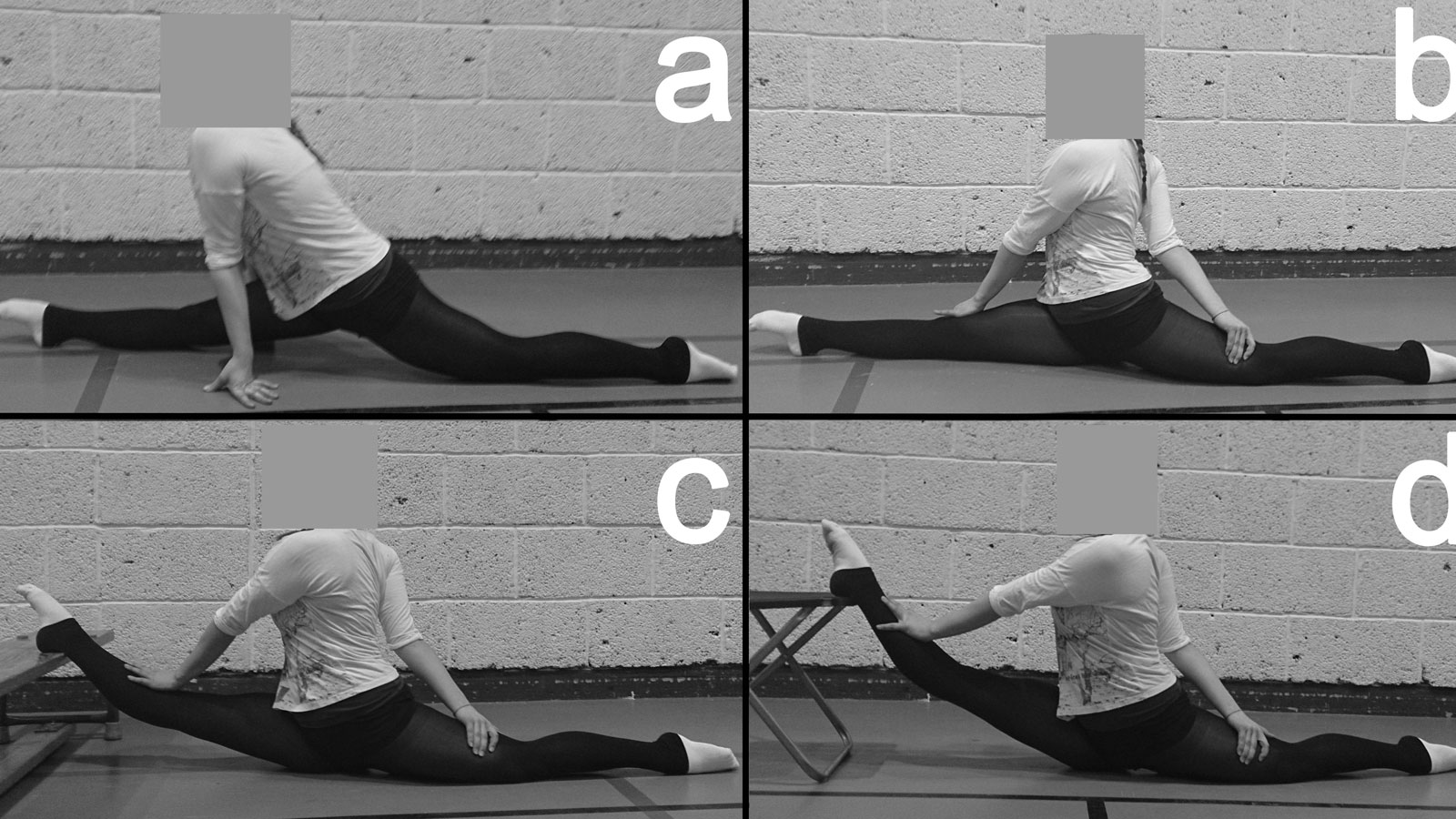“Nnngh...! Look! Look here!
I’m standing bent over with very straight legs and stretch as far down I can.
“Officially, I'm the world’s stiffest! Haven’t touched my toes for at least 20 years.”
Marie just laughs at me. And tries to comfort me a bit.
“That’s not so unusual. I can get you suppler. But (with a giggle), you're pretty stiff, aren’t you? You don't like to stretch?"
FACTS
- The muscle tendon system consists of tendons, muscles and connective tissue in and around the muscles.
- The tendons are connective tissues. The tissue is elastic, but may be difficult to grow longer.
- The muscles are bundles of muscle fibres. Around the fibre is a thin “foil” of connective tissue, much like that of which tendons are made.
- The connective tissue is much less elastic than muscle fibres. The muscle fibres alone can stretch much more than their connective tissue.
Stretching works
Home run. Marie Moltubakk has recently been studying the effects of stretching in her doctoral thesis at the Norwegian School of Sports Sciences (NIH). Or: “The effects of long-term mobility training on the muscular tendon system’s morphology, mechanics and function” is what the thesis is really called.
She has had more than one student stretching one leg – the other leg has been used a the control group – and she has discovered that:
Stretching works. If you work diligently, you can become much more mobile.
Stretching works even if short muscle fibres or tendons become longer.
Better mobility does not just change pain threshold; the passive resistance to mobility in the muscles is reduced.
Stretching changes both how far you can bend or move a joint as well as how the muscular tendon system works when you move.
Bending on the platform
“It means that anyone who wants to, can stretch themselves suppler. This in turn means that you can help yourself perform better both in your sporting activities and at other times of the day. In any event, those who are stiff to begin with can benefit greatly from mobility exercises; your mobility reduces with age.”
“So, forcing yourself through an uncomfortable round of stretching right after a workout ...?”
“... is not essential, no. You don’t have to take on the stretching bit when you’re most tired. It turns out that you can just as easily stretch while reading the newspaper or waiting for the bus.”
“But you are indeed more supple when you are warm ...?
“Right, but the ‘extra slack’ returns when you get cold.”

Less resistance, more elasticity
Marie Moltubakk has run 26 healthy students through six months of mobility training. Every day for six months, they did two stretching exercises of the hamstring (the muscle on the back of the thigh) and the calf – four repetitions for each. The participants stretched one leg, and then they were appraised at the end of eight weeks. The measurements were taken along the length of both muscles and tendons in addition to the deflection of the joint – the maximum angle of bend, for example, in the ankle joint.
The measurements showed, amongst other things, that:
Passive resistance to stretching was reduced – it gradually required less force to move a joint to a certain angle.
The deflection of the joints had increased: They were all able to stretch further. On average, the maximum deflection (“the dorsiflexion”) in the ankle increased from 17 to 29 degrees. (Ballet dancers average 40 degrees.)
Muscle activation when stretching was reduced: Even if you try to relax when stretching, the muscle will work contrarily to protect itself. The decrease was the result of less pain and/or increased elasticity.
The same length, but greater extension
“One discovery that might surprise many is that short muscle fibres or tendons grew longer by stretching.”
“But ...?”
“But you can still make the muscle-tendon system longer, can’t you?” “That's right, even though a relaxed muscle and tendon are the same length after a period of stretching, we can stretch them a bit more. And even if we are not 100 percent certain, we believe that something happens inside the muscles.

Most likely, the connective tissue between the muscle fibres changes.”
“I strongly believe that stretching can make the connective tissue more elastic”, Moltubakk says. “Those who may have thought that stretching is only about pain thresholds and that these are not ‘real’ improvements, have to believe that.”
How YOU can become supple: Often and calmly
Marie Moltubakk says the exercises you do have to be easy. And often. “If the program becomes too extensive, it is very easy to drop out”, she says.
“Decide which parts of the body you want to prioritise. For example, if you want to reach down to the floor with straight legs, then it’s the hamstring on the back of the thigh and possibly the legs that need to be stretched.
The exercises need to be carried out often enough, at least two-three times a week – preferably daily.
Static stretching should be maintained for 45-60 seconds. Repeat the exercise three or four times.
Do not stretch too intensely. It’s important to be able to properly relax, and we don’t think that more pain produces a better result.”
“Often enough and calm enough”, she sums up by saying – and recommends spending an hour with a personal trainer, to receive help in finding out what exercises you need and to learn to do them correctly. “Give it a try for one month, then you ought to see.”
“Lesson ...?”
“Lesson for you, yes.” If you really want to, then ...
“And if I keep at it long enough, could I become as supple and resilient as a ballet dancer?”
“Hehe – hardly. The world is unfair”, she asserts. “Nobody was born with extra-large mobility, and when we researched the ballet dancers from the opera, we found they had longer tendons and calf muscle fibres, as well as extremely good mobility. Maybe you missed it; maybe that's why you're not a ballet dancer today.”
In addition to the training study, Marie Moltubakk's doctoral thesis also covers:
- Comparison of mobility and function in the hamstrings of national sportsmen in rhythmic gymnastics compared with other sports active girls.
- Mobility and structure of the lower leg in professional ballet dancers compared with young, exercise-active women.
